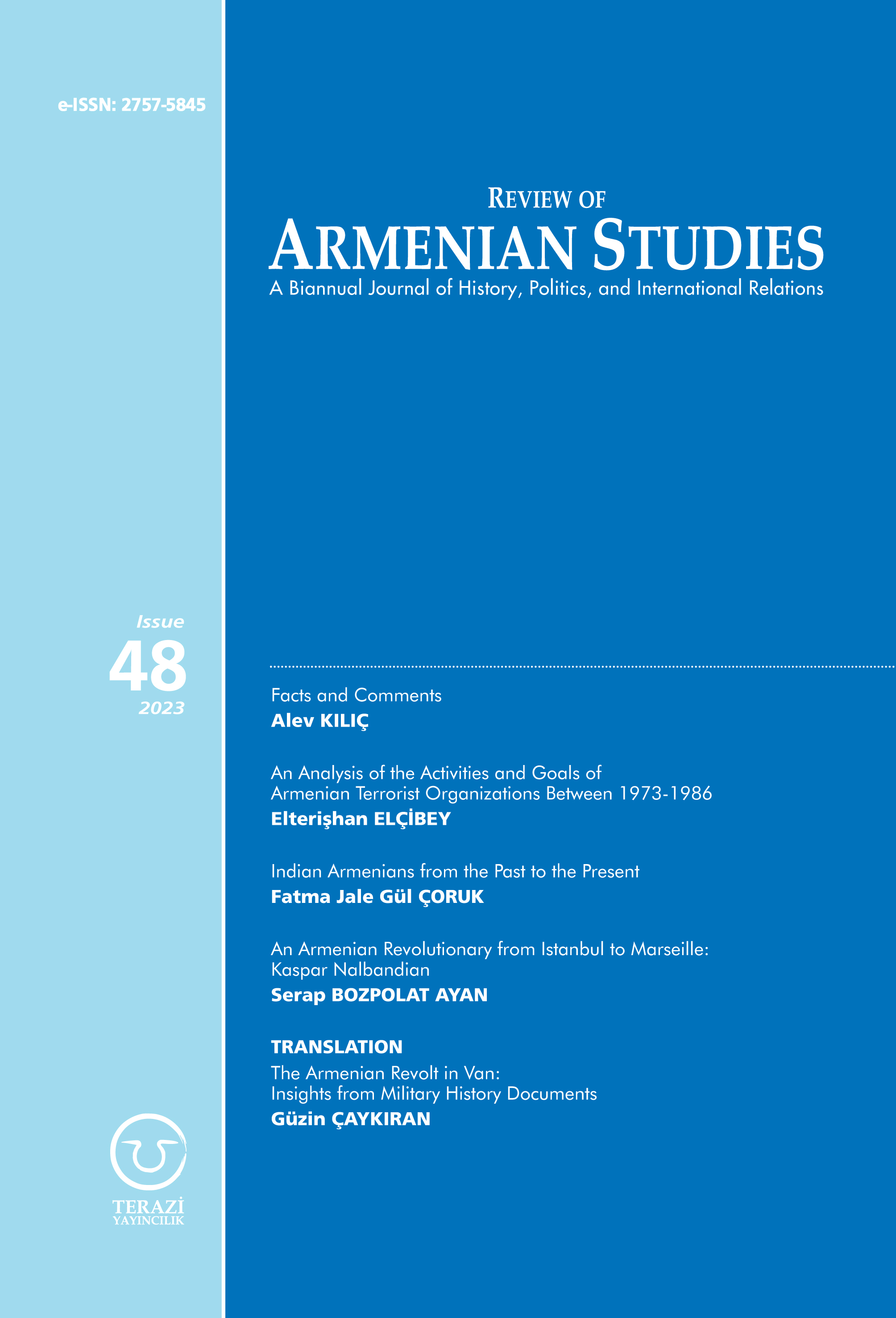As always, the first article in the 48th issue of our journal is “Facts and Comments”. This article covers the period of June-November 2023 of the internal developments in Armenia, the international standing and relations of Armenia, Azerbaijan's establishment of sovereignty over the entirety of Karabakh with the anti-terrorist operation launched on 19 September, the transport corridor of Zangezur, and the bilateral relations of Türkiye and Armenia. The article emphasizes Russia’s weakening interest and impact in the region stemming from its war with Ukraine, the strategy of the West to distract Russia on a second front as well as its initiative to align Armenia on its side with a view to reducing the influence of Russia in the South Caucasus, and Prime Minister Pashinyan's green light to the West's approach at the expense of alienating Russia. The article also considers the “Peace Crossroads” project announced by Armenia in November, which has raised the optimism that a solution to the transport issue could be at hand.
In his article titled “An Analysis of the Activities and Goals of Armenian Terrorist Organizations between 1973-1986”, Elterişhan Elçibey mentions that the terrorism perpetrated by Armenian radicals in the past against Turkish targets was the result of a hostile Armenian nationalism based upon anti-Turkish sentiment with the aim of attaining short-term political gains. Elçibey indicates that transnational Armenian terrorist activities reached their zenith when these activities turned out to be a grave threat to multiple countries rather than to specific countries such as Türkiye. He highlights that the terrorist organizations of the Armenian radicals carried out more than 300 terrorist acts in 20 different countries in less than 20 years, primarily against Turkish targets. He argues that between 1973 and 1986, these organizations came to be known as the world’s most dangerous and notorious groups.
In her article titled “Indian Armenians from the Past to the Present”, Fatma Jale Gül Çoruk seeks to present a holistic perspective on Indo-Armenian relations from the ancient times up to the modern times. She discusses when and how the relations began in the historical process, the reasons for and the details of the process that led the Armenians to India, as well as the formation stages of the Armenian settlement centers in India. In addition, she discusses in detail the cities with the densest Armenian settlements and the social, political, religious, and commercial activities of the Armenians in those places. Lastly, Çoruk presents information on the commercial and military foundations of today's Armenia-India relations.
In her article titled “An Armenian Revolutionary from Istanbul to Marseille: Kaspar Nalbandian”, Serap Bozpolat Ayan makes extensive use of archive documents to study Ottoman authorities’ intense pursuit of Kaspar Nalbandian, a member of the Armenian revolutionary movement against the Ottoman Empire. She indicates that Sivas was important for the Armenian community living in the Ottoman Empire due to substantial numbers of Armenians inhabiting the region and that it became one of the important centers of the Armenian revolutionary movements in the Empire. Members of Armenian political organizations from Sivas -which included Nalbandian- came to operate outside the province as well, encompassing the rest of the Ottoman lands and beyond. Bozpolat Ayan’s study attempts to provide insights into the functioning of the state mechanisms on these issues, and to present the journey of an Armenian individual to offer glimpses on the Armenian movements in the era.
Our 48th issue also contains the translation of a Turkish language article titled “Askerî Tarih Belgelerine Göre Van’da Ermeni İsyanı Günlüğü” (“The Armenian Revolt in Van: Insights from Military History Documents”) by Güzin Çaykıran. Çaykıran examines the daily progression of the Van Revolt of 1915 initiated by the Armenian revolutionary committees in the Ottoman city of Van, shedding light on military history documents (war reports) and revealing the impact of this revolt on both Muslims and Armenians.
Have a nice reading and best regards,
Editor
ARTICLES:
Alev KILIÇ – “Facts and Comments”
Elterişhan ELÇİBEY – “An Analysis of the Activities and Goals of Armenian Terrorist Organizations between 1973-1986”
Fatma Jale Gül ÇORUK – “Indian Armenians from the Past to the Present”
Serap BOZPOLAT AYAN – “An Armenian Revolutionary from Istanbul to Marseille: Kaspar Nalbandian”
TRANSLATION:
Güzin ÇAYKIRAN – “The Armenian Revolt in Van: Insights from Military History Documents”
-


